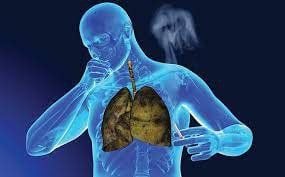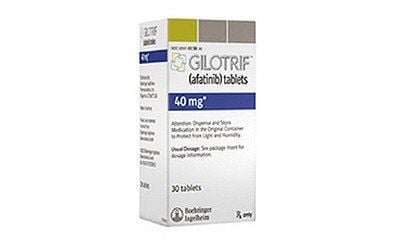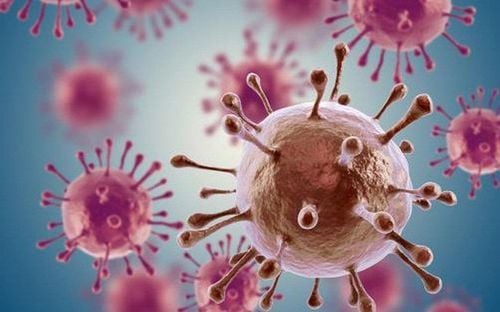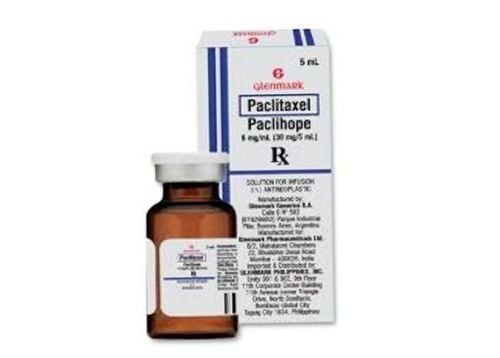This is an automatically translated article.
Post by Master, Doctor Ha Thi Thu Hien - Pathologist - Laboratory Department - Vinmec Times City International Hospital
When a person is diagnosed with lung cancer, doctors will determine if it has metastasized and if so, to what parts. This process, called staging, helps describe the amount of cancer in the body.
1. Diagnosis of lung cancer stages of non-small cell lung cancer
After a person is diagnosed with non-small cell lung cancer (NSCLC), doctors will determine if it has metastasized and if so, to what parts. This process is called a phase. The stage of a cancer describes the amount of cancer in the body. It helps determine what the severity of the cancer is and how to best treat it. Doctors also use the stage of cancer when talking about survival statistics.
The earliest stage of non-small cell lung cancer is stage 0 (also known as carcinoma in situ). The other stages are from I to IV. As a rule, the lower the number, the less the cancer has metastasized. A higher number, such as stage IV, means the non-small cell lung cancer has spread more.
Non-small cell lung cancer is usually given a clinical stage based on the results of clinical examination, biopsy, and imaging. If surgery is performed, the pathological stage (also called the surgical stage) is determined by examining the tissue removed during surgery.
Trắc nghiệm: Hiểu về phổi của bạn
Phổi là một tạng lớn rất quan trọng và không thể thiếu trong cơ thể. Việc giữ cho lá phổi của bạn luôn khỏe mạnh, tránh khỏi những bệnh phổ biến về phổi là điều bạn cần lưu ý để giúp cơ thể bạn có thể vận hành tốt. Hãy cùng chúng tôi trả lời nhanh những câu hỏi trắc nghiệm sau sẽ giúp bạn hiểu về phổi của bạn hơn.
Bài dịch từ: webmd.com
The following content is prepared under supervision of Thạc sĩ, Bác sĩ y khoa, Nguyễn Huy Nhật , Nội Hô hấp , Khoa Khám bệnh & Nội khoa - Bệnh viện Đa khoa Quốc tế Vinmec Đà Nẵng
2. Small cell lung cancer stages
When diagnosed with small cell lung cancer (SCLC), doctors will try to find out if the tumor has spread and metastasized. This process is called a phase. Cancer stages describe the extent of cancer in the body. It helps determine the severity of the cancer and how best to treat it. Doctors also use the stage of the cancer when calculating survival rates.
The stage of small cell lung cancer is based on the results of the physical exam, biopsy, imaging and any other tests performed
2.1. Limited versus extended stage For therapeutic purposes, most physicians use a 2-stage system that divides SCLC into limited and extended stages. For limited-stage cancer, a person may benefit from more aggressive treatments such as chemotherapy combined with radiation therapy. For advanced disease, chemotherapy alone is likely to be a better option for cancer control.
2.2. Limited stage This means the cancer is only on one side of the lung and can be treated with radiation therapy. Cancer that has spread to the lymph nodes above the collarbone (called supraclavicular nodes) can still be considered limited stage, as long as they are on the same side of the lung as the cancer. Some doctors also limit the inclusion of lymph nodes in the center of the chest (mediastinal nodes) even if they are near the other side of the chest.
It is important that the cancer is confined to an area that is small enough to be treated with radiation therapy in a treatment area. Only about 1 in 3 people with SCLC is still in the limited stage when it is first discovered.
2.3. Extensive stage This stage indicates that lung cancer has spread throughout the lung, to another lung, to lymph nodes on the other side of the chest, or to other parts of the body (including bone marrow). Many doctors think that SCLC that has spread to the fluid around the lungs is also an enlarged stage. About 2 out of 3 people have extensive SCLC when they are first diagnosed.
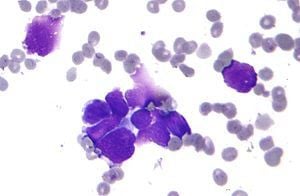
3. Lung Cancer Staging System
A more formal system for describing lung cancer growth and metastasis is the AJCC's TNM segmentation system, which is based on 3 keys of information:
Size and extent of spread of primary tumor ( T) Tumor spread to nearby lymph nodes (N) Tumor metastasis to distant sites (M). The numbers or letters after T, N, and M provide more detailed information about each of these elements. A higher number means the cancer is more advanced. A person diagnosed with cancer has T, N, and M already identified, this information is combined in a process known as staging to assign an overall stage.
4. Lung cancer survival rate
Survival rates can provide information about the percentage of people with lung cancer of the same type and stage who are still alive for a certain period of time (usually 5 years) after they have been diagnosed . This rate cannot tell how long a person will live, but can help them better understand the likelihood of successful treatment.
Remember that survival rates are estimates and are often based on the results of a large number of people with a particular cancer, but it is not possible to predict what will happen in a particular case. These statistics can be confusing and can leave people with more questions. Talk to your doctor about how these numbers apply to everyone, as doctors know the patient's medical condition well.
Relative survival rates compare people with the same type and stage of cancer in the overall population. For example, if the 5-year relative survival rate for a specific stage of lung cancer is 60%, it means that people with that cancer, on average, about 60% live at least 5 years after being diagnosed. diagnose.
The American Cancer Society relies on information from the SEER (SEER = Surveillance, Epidemiology, and End Results) database, maintained by the National Cancer Institute (NCI), to provide statistics on viability of different types of cancer. The SEER database tracks 5-year relative survival for non-small cell lung cancer (NSCLC) and small cell lung cancer (SCLC) in the United States, based on how far the cancer has spread apartment. However, the SEER database does not group cancers by AJCC TNM stages (stage 1, stage 2, stage 3,...). Instead, it groups cancers into localized, regional, and distant stages:

Localized: There is no indication that the cancer has spread outside the lung. Regional: Cancer has spread outside the lung to nearby structures or to the lymph. Distant: Lung cancer has spread to distant parts of the body, such as the brain, bones, liver, or lungs. 5-year relative survival rates for non-small cell lung cancer
These numbers are based on people diagnosed with NSCLC between 2010 and 2016.
| Giai đoạn SEER | Tỉ lệ sống tương đối trong 5 năm |
| Khu trú | 63% |
| Khu vực | 35% |
| Xa | 7% |
| Kết hợp tất cả các giai đoạn SEER | 25% |
5-year relative survival rates for small cell lung cancer
These numbers are based on people diagnosed with SCLC between 2010 and 2016.
| Giai đoạn SEER | Tỉ lệ sống tương đối trong 5 năm |
| Khu trú | 27% |
| Khu vực | 16% |
| Xa | 3% |
| Kết hợp tất cả các giai đoạn SEER | 7% |
Understand the numbers
These numbers only apply to the stage of the cancer when it was first diagnosed. Not applicable if cancer grows, spreads or recurs after treatment. These numbers don't take into account everything. Survival rates are grouped based on how far the cancer has spread. But other factors, such as the subtype of NSCLC, genetic variation in the cancer cells, a person's age and overall health, and how the cancer responds to treatment, can also affect to a person's prognosis. People currently diagnosed with NSCLC or SCLC may have a better prognosis than these numbers show. Treatments have improved over time and the numbers are based on people who have been diagnosed and treated for at least 5 years. In summary, a more formal system for describing lung cancer growth and metastasis is the AJCC's TNM segmentation system, which is based on the size and extent of spread of the primary tumor (T); tumor spread to nearby lymph nodes (N) and tumor metastasis to distant sites (M).
Lung cancer is one of the cancers that cause high mortality for patients, so lung cancer screening is the most effective measure for you to detect and promptly treat lung cancer, protect your health and protect your health. his life. Currently, Vinmec International General Hospital has a Lung Cancer Screening Package with many outstanding advantages such as:
A team of highly qualified and experienced doctors. Comprehensive professional cooperation with domestic and international hospitals: Singapore, Japan, USA, .. Comprehensive treatment and care, multi-specialty coordination towards individualizing each patient. Having a full range of specialized facilities to diagnose the disease and stage it before treatment: Endoscopy, CT scan, PET-CT scan, MRI, histopathological diagnosis, gene-cell testing, .. Full range of main cancer treatment methods: surgery, radiation therapy, chemotherapy, stem cell transplant... When registering for the Lung Cancer Screening Package at Vinmec, customers will receive:
Examination respiratory specialist Low-dose computed tomography lung tumor screening.
Please dial HOTLINE for more information or register for an appointment HERE. Download MyVinmec app to make appointments faster and to manage your bookings easily.







